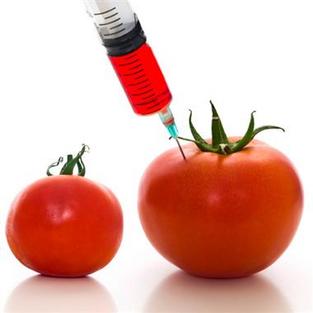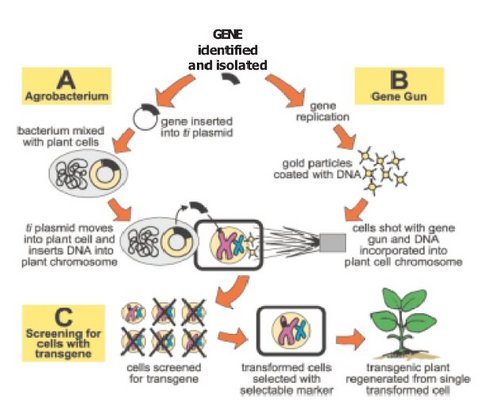Genetically Modified Foods

Source: http://www.newworldorderwar.com/wp-content/uploads/2010/05/1412_1_380.jpg
Genetically modified foods are organisms that have had specific changes introduced into their own DNA with genetic engineering. GM foods were first put on the market in the early 1990s. Genetically modified foods are usually plants that have been modified such as soybean, corn, canola and cotton seed oil. Animal products have also been produced as a result of genetic modification but none are currently on the market due to the public controversy. In 2006, a pig was genetically modified to produce omega-3 fatty acids using a roundworm gene. Evidently, this caused public outburst as people were shocked by the fact that food they could soon be eating was modified by scientists in a lab.
How is it done ?

Source: http://www.kicsforum.net/docsweb/images/Basics-Genetic-Modification-2.jpg
Genetic modification involves changing the DNA of the organism. This can be done by inserting or deleting specific genes of that organism. There are two different ways of doing this. In the process of cisgenesis, genes are artificially transferred between organisms that could conventionally be bred. The other process is transgenesis; this is where genes from a different species is inserted, which a form of horizontal gene transfer.
Firstly scientists have to find the desired characteristic they wish to insert into an organism. The gene is then inserted inside a plasmid, also known as a carrier, where is it ready to be placed into the nucleus of a cell.
However, since the nucleus of a cell in the plant is so small (only visible under a microscope), how are scientists able to successfully insert the genes into the cell?
Well, they use a tool called a gene gun. It works by first pressurising the helium in the cell; with this allowed pressure they are able to discharge a micro projectile containing the genes onto a Petri dish. When the pressure is released, thousands of micro projectiles are launched (being inside a carrier) towards the cell nucleus at a certain velocity. Such velocity allows the micro projectiles to pass into the nucleus without the carrier entering as well. Similar to sexual reproduction, until the DNA comes into contact with the plant chromosome, nothing will happen. Sometimes scientists will have to try many times before they successfully insert the gene, which is only the first part of the process.
Next, the plant with these cells containing the new DNA, are bred with an original plant of the same species. The result is a transgenic plant, otherwise known as a genetically modified plant. This process of breeding is known as backcrossing.
Firstly scientists have to find the desired characteristic they wish to insert into an organism. The gene is then inserted inside a plasmid, also known as a carrier, where is it ready to be placed into the nucleus of a cell.
However, since the nucleus of a cell in the plant is so small (only visible under a microscope), how are scientists able to successfully insert the genes into the cell?
Well, they use a tool called a gene gun. It works by first pressurising the helium in the cell; with this allowed pressure they are able to discharge a micro projectile containing the genes onto a Petri dish. When the pressure is released, thousands of micro projectiles are launched (being inside a carrier) towards the cell nucleus at a certain velocity. Such velocity allows the micro projectiles to pass into the nucleus without the carrier entering as well. Similar to sexual reproduction, until the DNA comes into contact with the plant chromosome, nothing will happen. Sometimes scientists will have to try many times before they successfully insert the gene, which is only the first part of the process.
Next, the plant with these cells containing the new DNA, are bred with an original plant of the same species. The result is a transgenic plant, otherwise known as a genetically modified plant. This process of breeding is known as backcrossing.
Development
The first genetically modified whole food crop was a tomato (called FlavrSavr) which was modified to ripen without softening. This turned out to be a success and thus the GM tomato was commercially marketed.
